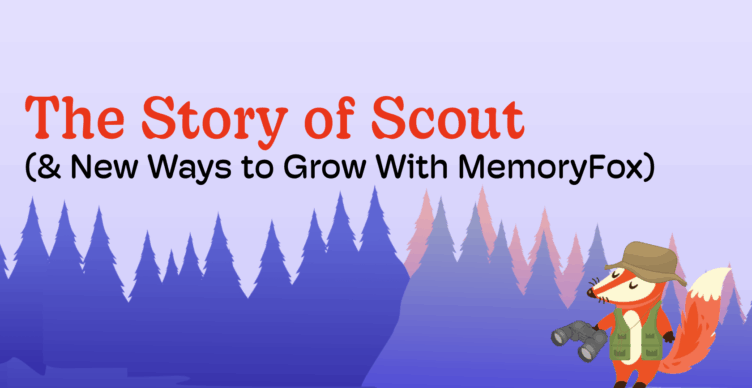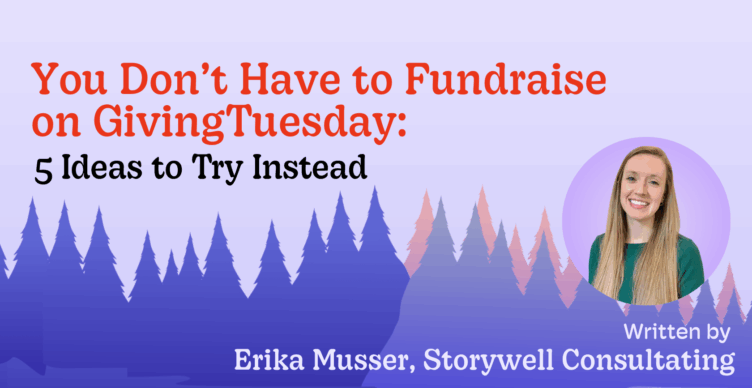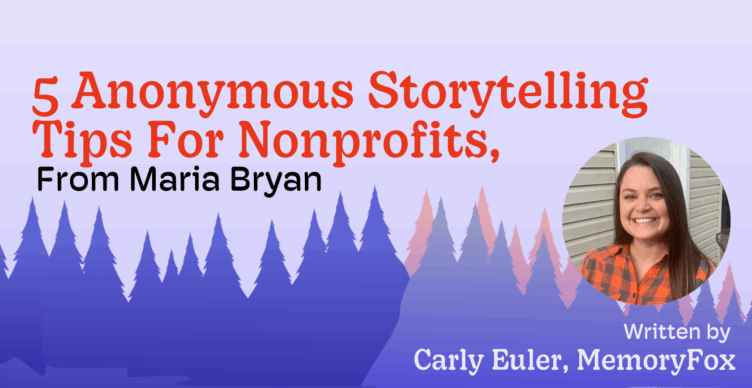Fundraising Tips, Storytelling Strategy
6 Storytelling Do’s and Don’ts for Year-End Fundraising
According to CharityEngine’s recurring giving statistics, December giving accounts for 26% of all online revenue (with half of that raised in the last week of the month). But when considering how to inspire action at the end of the year, nonprofits must work to make their case for support in engaging ways.
Statistics show that nonprofits that effectively use storytelling in their fundraising efforts have an 18% higher donor retention rate than those that don’t. Storytelling is a powerful tool for nonprofits, not only for connecting with constituents but also for fostering accountability and driving change.
Knowing which stories to tell and how to tell them is critical to using this tool effectively. Here are six storytelling do’s and don’ts to help you engage donors and close the year strong.
DO: Center Real People & Their Voices
We can all tell when we’re being spoken to with clichés or institutional language, or when we’re just given statistics in answer to a question. Authentic voices cut through noise in a way those responses can’t. A direct quote from a beneficiary, a heartfelt reflection from a long-time volunteer, or a first-person story from a donor brings humanity and credibility to your message.
Rather than just relying on what you and your team think, tap into community-sourced content. Ask a recurring giver why they keep giving, or ask a first-time donor what drew them to your organization. Ask a peer-to-peer fundraiser what it was like to rally friends and family for a cause.
Here are some ways you might gather this information:
- Send short surveys via email
- Add a survey to your donor portal
- Host a virtual focus group
- Offer a link in your newsletter for people to share their thoughts
- Call a cohort of donors and directly ask for their feedback
Consider who you’re asking as well. Those who have been part of your organization for years—such as long-time donors or volunteers—are especially valuable sources. They can speak to the evolution of your impact over time, offering rich context and credibility that newer supporters may not yet have.
DON’T: Oversimplify or Dramatize for Effect
While we’re talking about clichés, be careful of using them for dramatic effect. Overly emotional or extreme language (like “devastated,” “hopeless,” or “shattered”) can seem to be exploiting a sensitive situation or someone’s pain. While you might think these words inspire a sense of urgency, they often fall flat.
Another common mistake is positioning the nonprofit as the hero of the story. It’s more important (and, frankly, more effective) to honor the strength or resiliency of those directly involved in the mission. For example, you are moved to help hungry children more than you’re moved to support a nonprofit.
Here’s a quick checklist of red-flag phrases to avoid. If you recognize any of them, scrub them from your communications!
- “It was a hopeless situation… until [nonprofit’s name] stepped in.”
- “[Beneficiary] found salvation through [nonprofit’s name]’s program.”
- “[Nonprofit’s name] immediately got to work and addressed their need.”
Instead, position donors as the heroes in every story you tell. A well-told story communicates the ways generosity advances the mission, which will help form deeper connections.
DO: Match Stories to Donor Segments
You’ll have many reasons to reach out to donors, and not every story or message will resonate the same with each donor segment. Tailoring your outreach to different audiences can deepen the impact.
In fact, Getting Attention’s marketing statistics report that segmenting digital campaigns produces up to 760% more revenue compared to non-segmented campaigns! For example, a heartfelt, thank-you story about a program’s long-term impact might mean a lot to a recurring donor, while a snapshot of current need might compel a one-time donor to give again.
Here are some story types or angles to consider for different groups:
- Recurring donors: Updates on long-term programs, gratitude notes
- One-time givers: Urgent needs or end-of-year goals
- Prospects: Mission-overview stories or introductory community highlights
- Volunteers: Exciting updates about an event, promises of special access
Also consider how different formats can strengthen your reach. A short video is perfect for social media, but a podcast included in an email could reach a broad audience of those who have opted into emails from your nonprofit.
A constituent relationship management (CRM) system can be extremely helpful in organizing donor data so you can properly segment your audience. Choosing the best nonprofit CRM requires a lot of research, but at its core, the platform should help you build automated marketing campaigns based on the donor data already stored in your system. And, if you need help implementing a CRM, consider working with a CRM consultant.
DON’T: Ignore Consent & Context
Storytelling without consent crosses an ethical line and can damage trust. Before collecting stories or sharing information about someone, get clear, voluntary, and even written consent. Explain how, where, when, and for how long their story might be used in any format.
Here are some tips on obtaining informed consent:
- Use jargon-free consent forms that explain the intended use
- Offer examples of where the story might appear
- Allow people to review and edit their story if they want
- Make it clear they are welcome to say no, if they choose
Always provide context to your story. Don’t crop photos or take bits of stories without providing the context that will help people understand what you’re communicating. Treating people with respect must always outweigh the impact you’re hoping to have on donors.
DO: Use Storytelling to Build Momentum
Storytelling isn’t just about pulling heartstrings. It’s a way to energize and activate your donors! Strategic storytelling can create a rhythm that builds up in your campaigns.
Certain elements of your story will naturally build momentum, such as impact data that shows your progress over time or historical information about the background of your organization. You can also build momentum by using storytelling timelines strategically, such as incorporating:
- Serialized stories
- Periodic progress updates of your work behind-the-scenes
- Story countdowns to year-end to inspire action
This kind of momentum keeps recurring donors engaged and gives those one-time donors a reason to come back. Putting donors in the story helps keep them around for the next chapter.
DON’T: Tell Stories in Isolation
A fabulous story without a clear follow-up or call to action is a missed opportunity. Don’t lose momentum after you’ve captured someone’s interest! Connect your stories to a border campaign or donor journey, and make it easy for donors to act.
Here are some follow-up strategies you can try to keep donors engaged:
- “Where Are They Now?” testimonials
- An email journey that unfolds over time
- Post-donation stories that follow a beneficiary
- Quarterly programs that build on previous campaigns
The most powerful stories aren’t one-time events; they’re part of an ongoing conversation. Pull your donors into the conversation and watch how it builds trust and deepens your connection, as well as providing new opportunities for engagement.
Human-centered storytelling is a potent tool during year-end giving. When done well, it inspires trust, communicates need, fuels generosity, and makes your donors feel like the heroes of the story. When you make storytelling central to your outreach, it’s a lasting source of support—more than just a seasonal tactic!

About the Author
Phillip Schmitz
Founder & CEO, CharityEngine
Phil Schmitz is the founder and CEO of CharityEngine, a complete fundraising platform powering some of the nation’s largest nonprofits and associations. Phil has developed patent-pending anti-fraud tools and industry-leading recurring payment technology that allows nonprofits to retain more sustainer revenue than the industry average; clients have raised nearly $5 billion using these tools. Phil’s passion for leveraging technology to empower nonprofits is supported by more than 20 years of experience in building successful technology and e-commerce companies.




